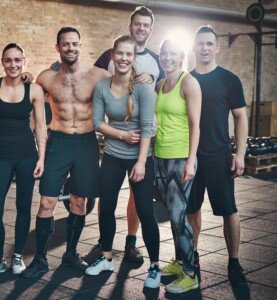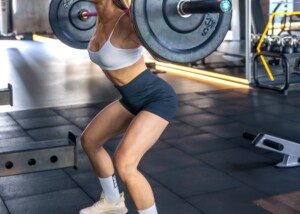Though a long femur relative to shin is a disadvantage in squats, it’s a biomechanical plus in the leg extension and hamstring curl.
The long femur to short shin proportion has been vilified as bad levers for the squat and deadlift.
But it’s vital to point out that these “bad levers” are actually a biomechanical advantage for the leg extension and hamstring curl.
Let’s Look First at the Leg Extension
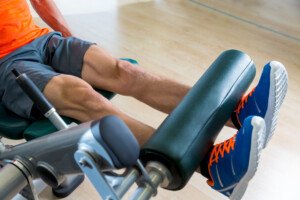
Shins appear LONG relative to femurs. Shutterstock/lunamarina
Many bodybuilders swear by this exercise for bringing out more sculpting in the quads. The fulcrum is the pivot point (in this case, the knee).
The resistance arm is the length between the knee and the foot where the foot is against the pad (weight application).
The force arm is the length between the knee and the hip.
The leg extension motion is similar to the classic example of a fulcrum and levers that we all learn in physics 101: the teeter totter, in which the fulcrum is represented as a triangle beneath the teeter totter.
On one end of the totter is a weight (the resistance). At the other end is the force (person pushing down on the board).
The closer the triangle (fulcrum) is to the weight, the easier it is to push down on the other end and lift the weight. Imagine the triangle very close to the weight.
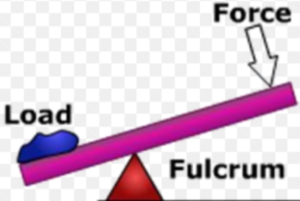
That’s a very short resistance arm. Let’s say that the fulcrum is two feet from the weight, and the person at the other end is 15 feet from the fulcrum. He has an easy job.
Now move the triangle (fulcrum) so that it’s only two feet from the person and 15 feet from the weight.
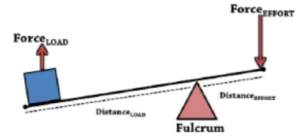
The force arm is now only two feet, and the resistance arm is 15 feet. It will be extremely difficult to push the board down and move the weight.
Apply these concepts to a person with a long femur and short shin, seated on a leg extension machine.
If the distance between knee (fulcrum) and hip is longer than the distance between knee and foot, this is akin to that triangle being closer to the weight.
In other words, think of the knee (fulcrum) as that triangle. Because the shin is short, the knee (triangle) is closer to the foot (weight application) than it is to the hip!
This becomes clearer when you imagine the athlete’s legs in full extension.
The knee is the fulcrum (triangle). If it’s closer to the weight application (foot) than it is to the hip (guy pushing down on teeter totter), it will be easier to move the weight!
Conversely, if the knee is closer to the hip (short femur, long shin), this is akin to the fulcrum (triangle) being closer to the guy pushing down on the board — making the work more difficult.
Imagine the profile of someone with a one foot femur and three foot shin sitting on the leg extension machine.
They begin extending their legs. That’s a LOT of shin bone that they must raise up, with that weight at the bottom (foot), and such a short force arm (short femur) to apply the effort.
Imagine a profile of someone with a super long femur and stumpy short shin. Gee, it’s pretty easy to get that shin parallel!
This same concept applies to the hamstring curl.

Shutterstock/Microgen
It will be harder for someone with short femurs and long shins to crank the weight towards their butt (short force arm) than it will for someone with a stretchy long femur and stubby short shin (short resistance arm).
So if you have long femurs and short shins, don’t despair over squat difficulties.
Do the best you can with the squat, but always include leg extensions and hamstring curls and see how much easier it is to move heavy loads than those with perfect squatting levers.
 Lorra Garrick is a former personal trainer certified through the American Council on Exercise. At Bally Total Fitness she trained women and men of all ages for fat loss, muscle building, fitness and improved health.
Lorra Garrick is a former personal trainer certified through the American Council on Exercise. At Bally Total Fitness she trained women and men of all ages for fat loss, muscle building, fitness and improved health.
.

